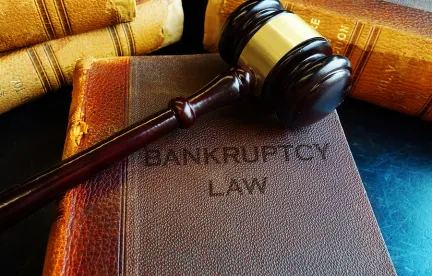The Supreme Court’s recent decision in Ritzen Group, Inc. v. Jackson Masonry, LLC, -- S. Ct. --, 2020 WL 201023 (2020), is a useful companion case to the high court’s decision five years earlier in Bullard v. Blue Hills Bank, 575 U.S. 496 (2015). Together these two cases clarify what constitutes a final order in the bankruptcy context. Understanding the Supreme Court’s jurisprudence in this area is critical to preserving and pursuing appellate rights in connection with bankruptcy court decisions.
In Ritzen, in an opinion delivered by Justice Ginsburg, the Supreme Court held that bankruptcy court orders that unreservedly grant or deny relief from the automatic stay are considered final.[1] In that case, the creditor had been denied relief from the stay and had been compelled to litigate its contract claim against the debtor before the bankruptcy court, and not in the creditor’s preferred state court forum. The creditor did not consider the denial of relief from the bankruptcy stay to be a final, appealable order. Accordingly, the creditor did not appeal from the decision and proceeded to litigate the merits of its contract claim before the bankruptcy court. After losing on the merits of the contract claim before the bankruptcy court, the creditor then sought to appeal denial of its motion for relief from the automatic stay. The Supreme Court affirmed the lower court’s decision, ruling that it was too late to appeal from denial of the stay-relief motion because that denial was a final order when it was entered, and the creditor had failed to timely appeal from that order.
The Supreme Court’s analysis turned on the language of 28 U.S.C. § 158(a), which provides that an appeal of right lies from “final judgments, orders and decrees” entered by bankruptcy courts in “cases and proceedings.” The opinion grapples with what constitutes finality in a bankruptcy “proceeding,” a term that differentiates bankruptcy appeals from appeals from district court decisions where “final decisions” are normally limited to decisions that resolve the entire case.[2] According to the Supreme Court, even though a bankruptcy court’s decision to grant or deny relief from the automatic stay does not resolve an entire case, it is considered final for appellate purposes because it resolves a proceeding before the bankruptcy court.
In defining what constitutes resolution of a discrete proceeding in a larger bankruptcy case, the Supreme Court’s Ritzen decision leaned on Bullard v. Blue Hills. In Bullard, in an opinion authored by Chief Justice Roberts, the Supreme Court held that an order rejecting a proposed plan of reorganization was not final, and thus could not be appealed as of right, because such an order does not conclusively resolve the relevant proceeding. The Supreme Court explained that the rejection of a reorganization plan by a bankruptcy court does not finally resolve a proceeding because it is often followed by negotiations among the parties, and then the submission of amended or new plans to the bankruptcy court. Plan approval, in contrast, is final because it “alters the status quo and fixes the rights and obligations of the parties.”[3] In Bullard, the Supreme Court defined the appropriate procedural unit as “the process of attempting to arrive at an approved plan”;[4] accordingly, in order to be final in that context, the order in question must resolve that entire process – and not be an interim step along the way.
Driving the Supreme Court’s analysis and conclusion in Ritzen is the issue of whether the appropriate procedural unit to consider is the stay-relief adjudication or the broader claim-resolution proceeding. If the Supreme Court had defined the “proceeding” as the latter, then it would have reached the opposite conclusion because denial of relief from the stay would be viewed as an interim step along the path of resolving a creditor’s claim against the debtor. But because the Supreme Court defined the procedural unit as the stay-relief adjudication, it flowed logically that resolution of that issue is itself a final order. The Supreme Court viewed the stay-relief adjudication as its own self-contained proceeding because a stay-relief motion “initiates a discrete procedural sequence, including notice and a hearing, and the creditor’s qualification for relief turns on the statutory standard” set forth in section 362(d) of the Bankruptcy Code.[5] In contrast, resolution of a creditor’s underlying claim, which would follow either in bankruptcy court or another forum depending on resolution of the stay-relief motion, is typically governed by state substantive law, not procedures and standards set forth in the Bankruptcy Code and the Federal Rules of Bankruptcy Procedure.
The broader context for the Supreme Court’s decisions in both cases is that the regime in bankruptcy is different from other litigation because a “bankruptcy case embraces an aggregation of individual controversies.”[6] The decisions in Ritzen and Bullard offer helpful guidance about how to define a discrete bankruptcy proceeding as a unit to assess finality, even as that discrete proceeding is just one among many proceedings that make up the “embracive bankruptcy case.”[7] Because final orders must be appealed within fourteen days of when the bankruptcy court enters the order and failure to appeal will result in the party waiving its right to appeal, the stakes are high for bankruptcy litigators to correctly understand and apply the principles set forth in these two decisions.
[1] Ritzen, 2020 WL 201023, at *2.
[2] Id.
[3] Bullard, 595 U.S. at 502.
[4] Id.
[5] Ritzen, 2020 WL 201023, at *4.
[6] Id. at 2.
[7] Id.




 />i
/>i

